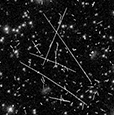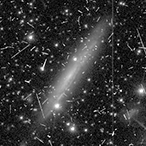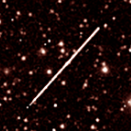Euclid is a space mission, for a very good reason: on the surface of Earth, “ground-based” telescopes are subject to sunlight during the day, varying temperatures, to clouds, humidity, wind, and sometimes even rain. They are subject to a constantly varying atmosphere – the consequences of ‘weather’. Euclid’s core science, cosmology, however, requires a telescope with very stable properties – not possible in ground-based weather – so Euclid had to go to space. In contrast, is the Sun-Earth-Lagrange-Point-2, where Euclid is now stationed, the most perfectly stable place? Well, not completely. We’ll tell you why.
Let’s have a look at two very different phenomena. On one side, if you have browsed Euclid’s First Light engineering images, you will have seen our explanations of those streaks and dots that can be seen in these images, that are not actually celestial objects – hits by particles, mostly cosmic rays:
On the other side, Euclid Consortium colleague Gordon Gibb last fall took this picture of a ‘northern light’, an aurora, in Edinburgh on his way home:
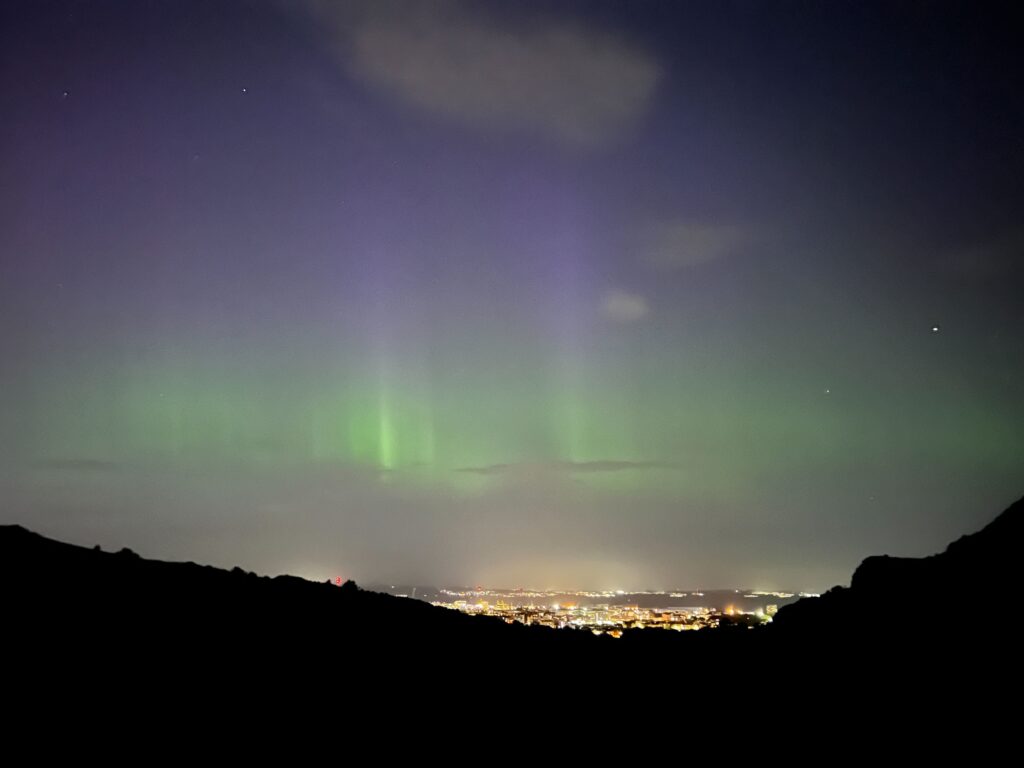
The phenomena are connected, by the fact that they are both created by highly energetic particles – from space. Although very different ones, high-energy solar electrons in case of the aurora, and ‘cosmic rays’ in the case of the traces we see in Euclid raw images. Cosmic rays are particles that are mostly protons, but that can originate from either the sun, as part of the solar wind of material that is constantly blown into the solar system. Or they can come as really high energy cosmic rays from a long distance away somewhere in our Milky Way home galaxy, produced in supernova explosions of stars. Some of the highest energies might even come from active galactiv nuclei, produced when a supermassive black hole accretes and swallows up gas.
The aurora seen in Edinburgh is created by electrons from the solar wind running around Earth, interacting with Earth’s very protective magnetic field. If that magnetic field is disturbed enough and electrons running along field line move with it, this means that electric currenty are created. If these run through the uppermost atmosphere – preferentially at the poles, where the field lines extend all the way to the ground – then they can interact with the atoms and molecules there. The solar-wind electrons in this case can ionize and excite atoms in the upper atmosphere, creating a ‘plasma’ where positively charged nuclei and their negatively charged electrons are separated. Electrons and nuclei recombining can emit light at characteristic wavelengths – exactly like in a neon-lamp. The green light seen above is recombining Oxygen, that is the main aurora mechanism at altitudes of around 100 km.
Northern and southern light are not there all the time, one needs specific conditions of the solar wind being particularly strong, for example through solar flares or solar coronal mass ejections, very energetic events occasionally happening on the solar surface. Only these events will bend Earth’s magnetic field in a ‘magnetic storm’ to a degree that can create an aurora. And there we have a key-word: ‘storm’. Space also has its weather, ‘space weather’, the changing radiation conditions in space outside Earth’s atmosphere.
And this also impacts the environment in which Euclid is operating. While the influx of supernova cosmic rays from the Milky Way is quite stable, the sun varies. Both day-by-day: solar flares create more protons that will impact onto Euclid’s detectors, which coronal mass ejections might increase solar protons, while actually creating a magnetic bubble that could be shielding Euclid from Milky Way particles. But the sun’s activity also varies over a larger 11-year ‘solar cycle’. Activity of sun-spots and the sun’s atmosphere vary substantially between the so-called solar minimum and maximum. At the minimum hardly any sun spots can be seen and solar flares are rare. At the maximum they are much more frequent – with substantially more solar protons and electrons – being emitted. Consequence: more aurorae, and more cosmic rays hitting Euclid.
There are satellites that explicitly monitor ‘space weather’. The GOES-16 satellite by NASA provides real-time measurements of X-ray, electron, and proton fluxes in space:
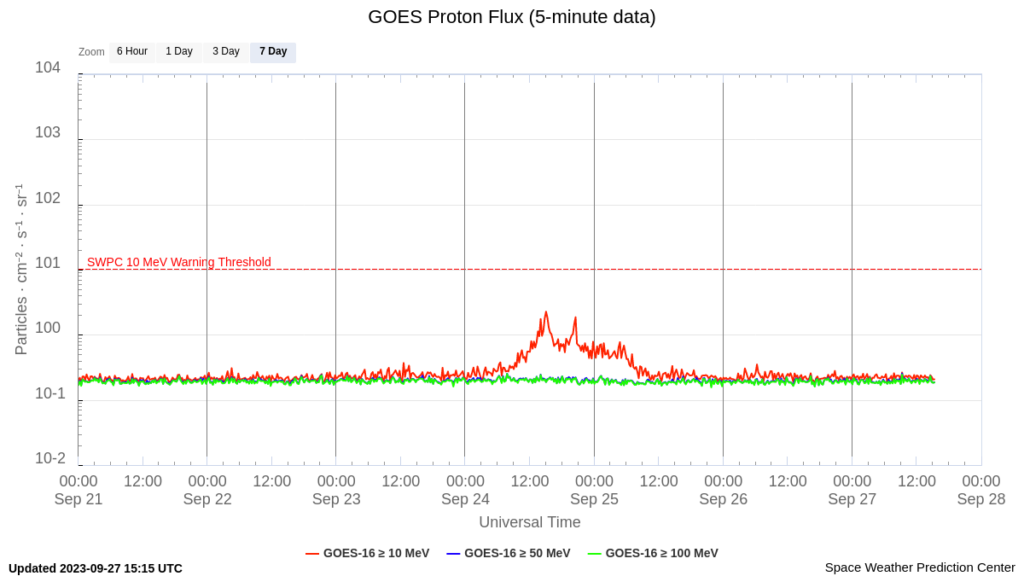
And so Euclid sees the impact of this radiation: X-rays, when hitting VIS detectors appear as extra light, impacting protons appear as the streaks we showed above. While X-rays do not do any lasting damage, protons over time can have that effect. Since they move super fast and are very energetic, they have the ability to on impact actually throw around atomic nuclei in the detector substrate, creating unwanted impurities. While in the design of Euclid this was taken into account and special provisions have been included in the VIS detector chip development to manage the consequences of these impurities, the cumulative effect over the years will still create a degradation of the detector performance. The same is true for all other chips of this type, e.g. in Hubble Space Telescope instruments. But it’s an expected effect, it can be dealt with, and hence does not impact Euclid’s ability to do science.
But we are, right now, moving into the absolute solar maximum. The cosmic ray intensity from solar protons will soon be at its highest level for the next decade, and then decrease over the next years als the sun moves towards its next minimum. Right now and in the early phases of Euclid’s starting survey, we shall expect quite a large number of cosmic ray hits, of periods with very high cosmic ray rates that might make one or the other exposure close to unusable. But this is the ‘weather’ that Euclid has to deal with and that we have been expecting. No way to get around it.

